The WHIMS of Mars
What will move the hearts of men to go to Mars, the kinds of men that will go, the kinds of Martians they will become, and the society that they will build
The smallest of movements can divert timelines onto entirely new courses.
And we’re on the good timeline now.
Not everyone appreciates the good timeline. A persistent current of discourse holds that we shouldn’t go to Mars, that it is a misbegotten ambition, unrealistic, unprofitable, and even counterproductive. “Antarctica would be easier,” they say, “We should start there if we start anywhere.” Mars is too difficult; the technology doesn’t exist; it’s fantastically expensive, with no conceivable profit to be derived from a frigid desert littered with dead rocks, where the clouds themselves are made of red dust, where the air is too thin and toxic to breathe, where nothing can possibly grow. Therefore, they pronounce, we shouldn’t go. We shouldn’t even try to go. We should use our limited resources to solve our pressing problems down here on Earth – climate change, poverty, racism, the gender pay gap, the refusal of the chuds to use the correct pronouns.
Leave aside that if Europeans had waited to solve Europe’s problems, they never would have left.
Leave aside that ‘we’ aren’t doing anything. Some people will use their resources to try this audacious thing; others will use their resources to do other things. The oft-heard phrasing of ‘we’ presupposes that ‘our’ resources are a collective property, their usage to be decided on the basis of utilitarian calculations carried out, presumably, by panels of self-selected technocratic experts. That collective ownership and central planning has been calamitous every time it has been applied in earnest is no barrier to the appeal of the idea over a great many minds.
Leave aside also the economic case for Martian settlement. That case has been made, and made well, by
in his essay The Trillionaires of Mars.Briefly, Mars is valuable because its shallow gravity well and proximity to the asteroid belt provides an ideal planetary surface on which to build the industrial infrastructure necessary to refine asteroids into useful metals and finished manufactured products, which can then be sent back to the terrestrial market (or shipped elsewhere in the solar system). As to the comparisons to Antarctica, planetary scientist
has addressed this in detail:As Hague points out, Antarctica’s geography means that it receives a vanishingly small amount of solar radiation (and during the winter, none at all). In contrast, while Mars’ greater distance from the Sun (an average of 1.5 Astronomical Units) means that it only gets about 44% of Earth’s irradiance, this is still a lot more than Antarctica. Growing crops is a lot easier on Mars than it is on Antarctica, where it can only be done hydroponically. Setting up shop on Mars means that we can use this solar energy not only to generate electricity, but also for agriculture. On Mars, in principle, one merely mixes human waste with the regolith (after removing the perchlorates) to turn it into topsoil, puts it in a transparent dome, fills the dome with air, and plants the potatoes.
Mars is certainly the easiest extraterrestrial body in the solar system to settle, occupying a sweet spot with its combination of proximity to the Earth, low gravity, an atmosphere, and abundant local resources. It therefore makes perfect sense that it would be prioritized for colonization. It’s Level 1 in the game of becoming multiplanetary. Other bodies may offer much richer prizes in the long run, but they’re also far more challenging.
Still, pace Devon, it’s unlikely that Mars will be profitable in the short run. Even asteroid mining will, at least initially, be far more useful for in situ space manufacturing than it will be for the terrestrial market. As Eriksen points out, correctly, if you strip-mine a quadrillion-dollar asteroid of nickel, iron, and platinum group metals and ship them back to Earth all at once, you’ll just crash the value of those metals. Supply and demand 101. Then again, as Eriksen also points out, raw materials aren’t just numbers on a commodity exchange: they’re actual, physical stuff that you can use to build things, and when society has more of it, society is wealthier in real terms ... something that we often forget in our hypothecated financial economy. This is a point I’ve made myself, in the context of a wider discussion about why we should fix our gaze upon the heavens, and ignore those who demand that we wallow perpetually in the mud:
Amongst the mud-wallowers is Neil Degrasse Tyson, who was recently asked about Elon Musk’s Arean ambitions on the Bill Maher show. You would think that a credentialed astrophysicist1 whose shtick is wide-eyed, child-like, awe-shucks wonder at the awesome vistas of the cosmos would be beside himself with enthusiasm, but of course and alas, Black Science Man instead reacted with the smug dismissal so very typical of the fat and self-satisfied bugman social class:
I have strong views on that: For him to just say ‘Let's go to Mars because it's the next thing to do.’ What does that venture capitalist meeting look like?:
‘Elon what do you want to do?’
‘Go to Mars.’
‘How much will it cost?’
‘1 trillion dollars.’
‘What's the return on investment?’
'Nothing.'
That's a 5 minute meeting.
Tyson is a voyeur, you see. He doesn’t want to touch anything; he just wants to watch.
Musk responded that indeed, this is why he isn’t seeking venture capital. The purpose of Martian settlement, settlement of the wider solar system, and in the long run the Galaxy, isn’t turning a profit, but ensuring the long-term survival of consciousness in a hostile and uncertain universe. This is hardly revelatory. Musk has been direct and vocal about this motivation from the very beginning. This does however point to a profound difference between Musk and the money-grubbing financiers who manage our miserable vaisya-dominated bazaar of a social order. To the merchant class, money is the only possible point of doing anything; to Musk, money is merely a means to a higher end. That he is also better at making money than them is a lesson worth pondering.

Extinction-proofing the human species may be Musk’s personal goal, but is it sufficient to motivate the participation of the many millions that will be required to be establish the Holy Solar Empire? This is something I’m a bit skeptical of.
Existential threats to humanity can be divided into two varieties: anthropogenic, which is to say hazards that we bring upon ourselves, and cosmogenic – threats from the universe. The former include large-scale nuclear war, germ warfare, ecological collapse, rogue AIs, and so on. Personally, I’ve become a bit skeptical that any of these really do pose existential threats. We’ve already experienced biological warfare using a weaponized virus, and most of the problems were caused by the hysterical overreactions of our managerial class. A strategic exchange would be horrific, but is unlikely to actually wipe out the species – there would be pockets of survivors, which would reboot civilization in time. As for AI, so far it’s mostly good at filling the Internet with terrible art and worse prose, which is deeply annoying, but not especially dangerous. AI, at least at this point in the Singularity, is mostly a pest; but we’ll see.
The main cosmogenic threat faced by the Earth is from cosmic bombardment. Everyone knows that the dinosaurs were killed off by an asteroid impact2. Recently it’s become apparent that cosmic impacts have played a role in human history, too. If the Younger Dryas Impact Hypothesis is correct3 the paleolithic Atlantean civilization was wiped out by a swarm of comet fragments 12,000 years ago. Dr. Martin Sweatman suggested in his book Prehistory Decoded that Göbekli Tepe4 might have been built as an observatory to keep track of the comet fragments whipping through the inner solar system at the time, and that the carvings on its pillars represent comets and constellations. Clearly, this catastrophe didn’t actually wipe out the human species; it just set us back by several thousand years.
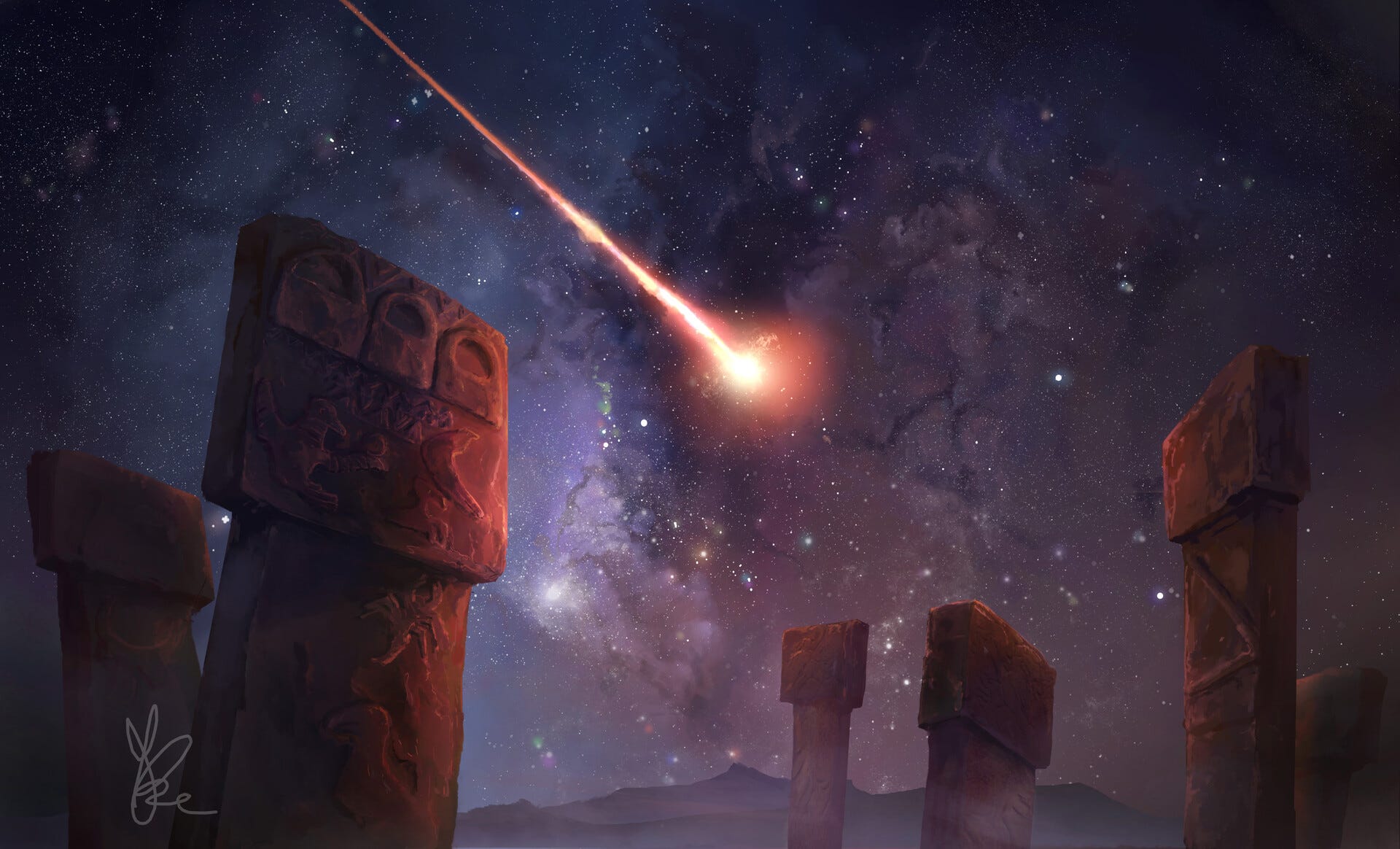
It’s certainly possible that the Earth might be pounded by comets or asteroids again. The 1908 Tunguska could have wiped out a small country if it had landed in populated area instead of Siberia; the 2013 Chelyabinsk bolide would have turned the small Russian city into a crater if it had been just a little bit larger. The ominously named Apophis is scheduled to make some uncomfortably close passes to the Earth in the near future, and while there’s no risk of an impact during its next closest approach in 2029 (or so we’re told), we can only rule out that it will hit us for the next century or so.

Apophis is no Chicxulub impactor; its kinetic energy is estimated at a mere 1200 megatons of TNT, roughly equivalent to the combined energy of the world’s nuclear arsenals. It would probably kill a couple billion people and wreck global civilization, but it also probably wouldn’t wipe out the species. The setback would be considerable, but not unrecoverable. The most advanced technologies would be lost, but core technologies – agriculture, metallurgy, electrical power generation, and so on – would certainly be retained, given that this knowledge is widely distributed.
Supernovae are another cosmogenic threat. Given the Sun’s 225-million-year orbit around the Galactic Centre, the Earth has undoubtedly been hit by supernovae before, and probably many times; several mass extinctions have been connected to supernovae, most recently just 2.6 million years ago. At the moment, however, the Sun is in a relatively sparsely populated part of the Galaxy. The nearest supernova precursor is Betelgeuse, whose spectacular death will light up our skies sometime in the next hundred thousand years. Betelgeuse, however, is about 640 light-years away. At that distance it will just be a pretty light in the night sky, roughly as bright as a full moon. A nice spectacle, but nothing to lose sleep over. For a supernova to pose a threat it needs to be within about fifty light-years, and there are no stars massive enough to go supernova within that volume – the most massive nearby star is Alpha Lyrae, which is only an A-type star, and will, like the Sun, simply turn into a red giant and then fade away into a white dwarf. In any case, even if there was an O-type star close enough to pose a supernova threat, you can’t dodge supernovae by spreading yourself to other planets in the same solar system, since the radiation flux affects the entire solar system. All you can do is hunker down while the gamma rays and cosmic rays rain down, and then wait for the ozone layer to rebuild and the nitric oxide smog to clear.
Gamma ray bursts are a different matter: these are beamed energy emissions from supernovae which can be lethal from the other side of the Galaxy. However, because they’re beamed, you have to be extremely unlucky to be in their path. So far as we’ve been able to tell the Earth has only been hit by a Galactic5 GRB once in its entire history: it’s been suggested as the trigger for the Ordovician mass extinction 440 megayears ago. As with a supernova, however, you can’t dodge a GRB by going to another planet. The whole solar system takes the hit.
There are of course longer-term cosmogenic threats, though it might be better to call them dooms, as they are unavoidable. In about four billion years, the Sun will swell up into a red giant, scorching and maybe even consuming the Earth.

Its atmosphere will blow away into space, leaving behind the Sun’s exhausted core, a tiny, dim ember of a white dwarf, and whatever is left of the Earth – if anything – will settle into a permanent deep freeze.
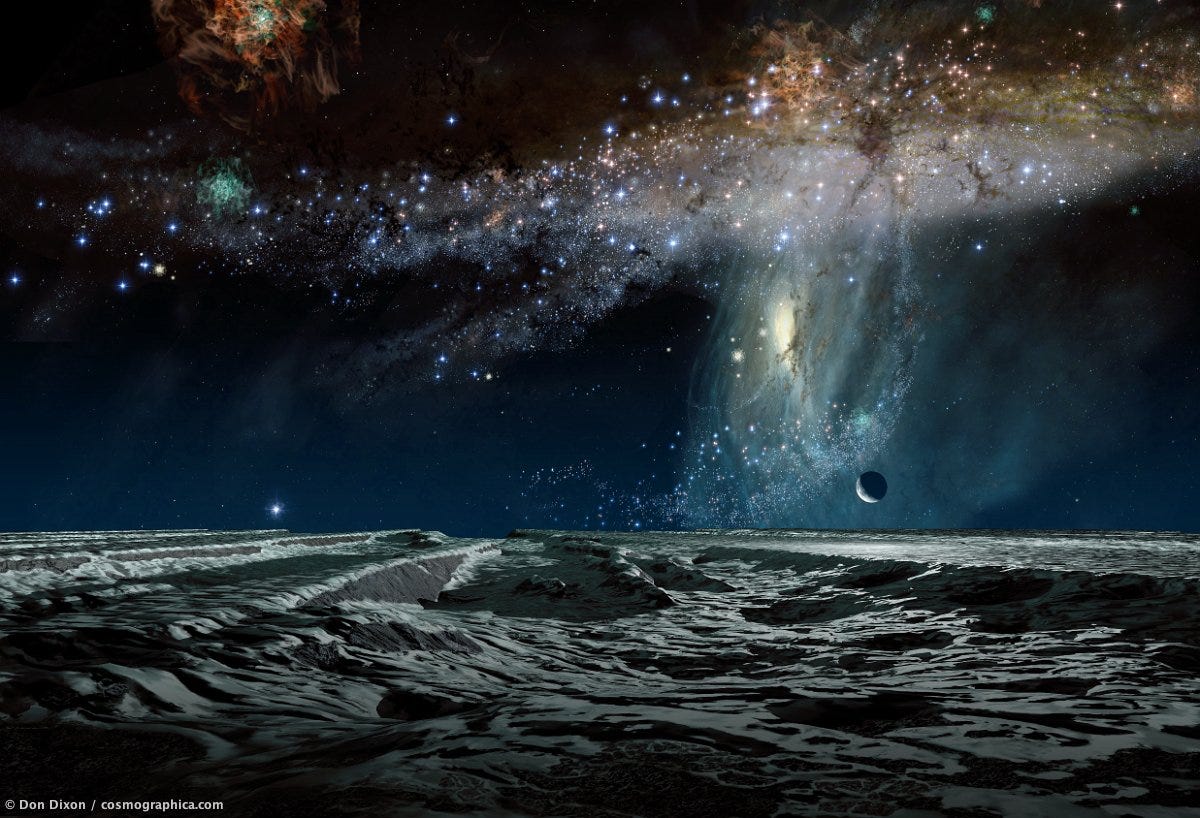
The Earth is likely to be uninhabitable long before then, however. The Sun is gradually becoming more luminous, while geological processes on the Earth itself slowly wind down. In about 500 million years the Earth’s atmosphere will bake off and its oceans will boil away; it will become a desert, unfit for life. Interestingly, right around this time Mars will move into the middle of the habitable zone, becoming warm enough for liquid water to once again persist on its surface.
In the very long run, trying to dodge extinction by spreading through the universe is futile, because the universe itself is dying: expanding, cooling, using up an increasing fraction of its available mass and free energy. Stars return most of their constituent material to the interstellar medium when they die, but there’s always a little bit that gets locked up in stellar remnants: white dwarfs for most stars, neutron stars for B-type stars, and black holes for the most massive O-type stars. In about a hundred trillion years there won’t be enough interstellar gas to form new stars. About ten trillion years after that, the last generation of long-lived, ultra-low-mass red dwarf stars will gutter out – the stelliferous era will end, and the degenerate era will begin, so-called because only the exhausted fossils of dead stars (which are built of degenerate matter) will remain. Eventually protons will begin to decay, and by about 10^40 years or so all that will be left are black holes, which will themselves slowly evaporate via Hawking radiation. This inaugurates the beginning of the terminal dark era, with nothing remaining but photons being slowly red-shifted to cosmological scales by the universe’s eternal expansion.

This is all quite bleak, but the human imagination can’t really grasp those timescales. It’s hard enough to wrap your head around a universe which is already 13.7 billion years old – a hundred million human lifetimes, enough time for the entire history of human civilization to be repeated a million times over, even those numbers are too large to comprehend. The stars will keep burning for several thousand times longer than the universe’s current age. What might or might not happen a hundred trillion years from now, or even a mere hundred million years, isn’t going to motivate anyone to get out of bed in the morning, or make them so depressed that they don’t. Nor, for that matter, are large numbers of humans going to endure the hardships of the Martian frontier in order to serve as a backup plan in case Earth gets unexpectedly whacked by a civilization-wrecking cometary swarm, or because the Earth has an expiry date in a few hundred million years. That might keep Elon Musk up at night, but it isn’t going to get hundreds of thousands of people on rockets.
So what will?

We focus too much, I think, on the business case for space development. This case can undoubtedly be made, and profitability is a big plus, but it’s a bit of a stretch on short timescales. The ultimate returns might be almost incalculable, but even with huge investment it will be several decades before the space starts paying dividends.
The settlement of the New World during the Age of Exploration was mostly carried out for economic reasons: gold mines in New Spain, plantations in the American South and the Caribbean islands, the fur trade in Canada. Most of these were financed by monarchs, who had the resources to back the fantastically expensive expeditions – in terms of purchasing power parity and adjusting for the actual size of the economy, Colombus’ journey cost around a billion dollars6.
Obviously, kings wanted a return on investment, which is why they tended to focus on mines and plantations. However, not every colony had a solid business case. The Puritan settlement of New England provides an entirely distinct model. The Mayflower came to the New World not to make money, but to build the New Jerusalem. They were religious maniacs who had been made to feel unwelcome in their native England – everyone who wasn’t a Puritan disliked being told they couldn’t drink, dance, go to the theatre, or decorate their churches – and so they obtained private financing from the Merchant Adventurers to settle New England, where they proceeded to build theocracies according to their Old Testament preferences, with minimal interference from the mother country, which was glad to be rid of them. This was possible because, 128 years after the Santa Maria arrived at San Salvador, and again adjusting for purchasing power parity and the size of the economy, outfitting the Mayflower cost the equivalent of around $10 million.
The Puritans are not the only example of ideological settlement. The Mormon settlement of Utah was carried out for similar reasons. They literally built a city in the middle of a desert so they could practice polygyny in peace. Nor is religion the solve motivation for such migrations: the United Empire Loyalists removed themselves to the forbidding forests of Upper Canada from the Thirteen Colonies after the Revolutionary War forced them to choose between their comparatively balmy homeland and fealty to their king.
Of course, all of those settlements had to be self-sustaining. They had to be able to grow their own food, build their own houses, make their own clothes. But they weren’t established, as the plantations were, specifically in order to extract a profit.
Friend of the blog
recently appeared on to discuss possible models for the industrialization and settlement of space. It’s a wide-ranging, fascinating discussion; SAM knows what he’s talking about, and I encourage you to give this a listen:Personally, I suspect that settlement of Mars will probably, at least initially, follow the Pilgrim pattern much more than it will follow the plantation or fur trade model. The short-term prospects for profit are simply too tenuous. While there’s the possibility of discovering something completely unexpected that changes the world – the way the potato, for example, revolutionized European agriculture – that can’t be counted on.

SAM makes the excellent point that the Anglo-American settlement pattern, which focused on fostering local self-sufficiency, turned out to be far more economically powerful in the long run than the purely extractive model pursued by the French and the Spanish: just compare the United States, Canada, Australia, and New Zealand to, say, Brazil or Mexico. However, while local self-sufficiency can certainly offer a very good standard of living to colonists and their posterity, it doesn’t do much for the investors back home. Since Mars – unlike, for example the asteroids – is attractive primarily because it’s the easiest place to establish a self-sufficient off-world colony, it’s likely that its settlement won’t be driven by economic imperatives so much as by ideology, religion, and the desire to escape.
Escape from what, you ask? What is there to escape from on this paradise of a planet, where the air is fresh, the water sweet, the forests teeming with life?
The answer, as always, is people.

Recall the interfering busybodies who don’t think that ‘we’ should use ‘our’ resources to conquer the solar system. Such people are insufferable, and the Earth is full of them. They dominate our governments and universities; they’re found in abundance within the bureaucracies of large corporations; they make comfortable little nests for themselves within the NGOs. They prosper by finding ways to tell people what to do; or, more often, finding ways to prevent people from doing things, by inserting themselves into the regulatory permission structure that the managerial revolution of the twentieth century wrapped like a straight-jacket around the Western world. There are huge numbers of people employed in every aspect of this: academics coming up with justifications for telling people what to do; NGO and media activists agitating for people to be told what to do; government bureaucrats to tell people what to do; corporate bureaucrats to reluctantly enforce government orders to tell people what to do.
In some ways the organized, systematic parasitism of the modern state can be seen as an unintended consequence of the abundance produced by industrial technology. Earlier in the twentieth century it was a common expectation that automation would mean a five-hour work week at some point in the future, as very little labour would be required to meet basic human needs. It’s often said that this didn’t happen because of a panic amongst the capitalists, whose ability to produce material goods outstripped demand, and who fretted that they would go bankrupt as their unsold goods crashed in price; in order to get the most out of their factories, they invented marketing and consumerism, brainwashing people into buying more than they needed, which also required that they continue working ... indeed, continue working even longer hours than they had before.
There’s some truth to this, but it’s also worth pointing out that, in fact, many lucky people have achieved a five-hour work week, or even less.
At the bottom of society you have the welfare classes, who cobble together baby bonuses, social security, medicaid, disability, residential housing assistance, food stamps, and so on to get through life without ever actually doing anything but eating, drinking, watching TV, playing video games, and smoking drugs.
The middle of society is filled with the bloated ranks of the professional-managerial class. While this class originally arose out of the necessity to coordinate the large, complex, geographically distributed, time-sensitive enterprises that comprise the organizational superstructure of industrial technology, they’ve long since outgrown their actual utility. A great many of them have pointless e-mail jobs that require almost no actual work on their part, and so spend their days pretending to work by writing memos, going to meetings, organizing workplace sensitivity training seminars, inventing superfluous reporting requirements, adjusting the colour scheme on their LinkedIn pages, and adding land acknowledgements to their email signatures. On paper these people work 9-to-5 jobs, but in practice they do almost nothing of value to anyone.
At the top of society is the financial class. Financiers played a crucial role in industrialization, directing flows of liquid capital as investments into the hard capital of physical infrastructure, but in recent decades they realized that instead of using investment capital to build things, they could craft a dazzling array of investment vehicles to extract value from things that other people built. Thus, for example, you get private equity using leverage to buy up perfectly viable local businesses and strip-mining them of assets in order to pay back their creditors with the plunder, and profit from the skim.
The welfare class, the professional-managerial class, and the financial class are all fundamentally parasitic upon the industrial economy and the primary producers who labour within it.
Intelligent, driven, productive people can see that the leeches, jobsworths, schoolmarms, and vampires filling the welfare rolls, haunting the bureaucracies, and rigging the stock markets are a great deal worse than useless. Unfortunately, intelligent, driven, productive people are a small minority. It isn’t even really a question of pure IQ; there are lots of smart people within the professional-managerial class, which is largely composed of midwits, but not exclusively; the financial class is full of quite brilliant minds. It’s much more a question of spirit than it is of brains. Some people want to be useful, to do real things in the real world, to create and build; others are happy doing nothing at all; others are happy to just break and take.
The situation is worsened by the Earth’s changing demographics, which have tilted hard towards the third world. There are well-known consequences for the global IQ balance that arise from this, but that’s only part of the story. The populations of the global south – what their champions have taken to referring to as the ‘global majority’ as they prepare the discursive ground to deny white people, soon to be a minority, the minority rights that white people have long indulged – are generally much more comfortable with the government, or other authorities, telling them what they can or cannot do. Their cultures tend to be much more communitarian than those of Western cultures; indeed, the individualism of the Western European, and particularly the Anglo, is a massive outlier from the human norm in this regard.
Over the last few decades a pestilential symbiosis has formed between the populations flooding into Western countries from the third world and the West’s homegrown managerial class. Managerialists like telling people what to do (and what not to do), and they also like taking things that aren’t theirs. Nationalization, expropriation, taxation, and other forms of legalized theft (such as the compliance costs imposed to deal with unnecessary regulations, and the consultancy grifts that arise from this) are their economic bread and butter. The managerialists long ago discovered that the populations of the global south are generally quite a bit more docile than white people: they might sometimes be more inclined to the kind of petty crime that emerges from poor impulse control and low intelligence, but they’re a lot less likely to demand that their rights to speech, property, and self-defence be respected, because they come from cultures in which they’re accustomed to the village elders or the Imam or the Brahmin or the Caudillo or whoever telling them what to do, and doing it, no questions asked. The brown and black people, meanwhile, are quite happy to become client groups in exchange for ethnic set-asides and various forms of wealth transfer ... which are obtained almost entirely at the expense of white men.
By beefing up the welfare roles with an imported third world underclass, the managerialists provide themselves with an excuse to harvest more of the resources generated by their captive white populations, while also smoothing their own social engineering projects: it’s much easier to overcode Western norms of self-reliance and individualistic liberty if you’ve stacked the electorate with peoples whose instinctive preferences are more socialist and communitarian.
In the short run there’s some prospect for pushing back against all of this, by remigrating the unwelcome newcomers, and dismantling components of the regulatory state. White men are going on the warpath, and they’re going to take back their countries ... at least a bit ... at least for now ... at least to some degree ... at least in some places. But the basic conflict is almost a spiritual one, which reaches down to the fundamentally opposed biological natures of very different kinds of humans, and it isn’t going away. You have people who don’t like being told what to do, people who don’t mind being told what to do, and people who love telling people what to do; the first group are outnumbered by the second group; that isn’t changing any time soon; and they’re stuck on the same planet together, which benefits the first group not at all.
It’s important to emphasize that not all white people are a problem for the managerial class; after all, quite a few white people are members of the managerial class. The problem whites are a specific subset, identified by Yale researcher Dan Kahan via survey data as the White Hierarchical Individualistic Male, or WHIM7.
WHIMs aren’t necssarily libertarians in the sense of ‘whatever goes, you do you, man’, although a lot of them are. They’re also hierarchical – it’s right there in the name. They respect competence and ability, and naturally expect to take their cues from men who are smarter, tougher, and more accomplished than they are. They are not egalitarians. Their individualism is the individualism of property-holding yeoman farmers, or of the comitatus warrior band in which the king is merely primus inter pares.
As can be seen in the above figures, WHIMs have profoundly different attitudes from the rest of the population on essentially every contentious topic you can name. They consider government regulation, environmental regulation, legal weed, and restrictions on gun ownership to be extraordinarily hazardous; they are completely blasé about private gun ownership, global warming, eating meat, nuclear power, and genetic engineering. Indeed, you could probably say these topics are contentious precisely because the WHIMs disagree with everyone else about them, often vehemently. As Jeremy Kauffman put it at the link above, “Hierarchical individualist men don't just not overlap with everyone else on the risks of climate change, they're on a different planet.”
Soon, they will have the opportunity to literally be on another planet.
A lot of them will jump at the chance.
Everything leading up to this point has really just been the preamble, setting the stage to discuss the genuinely interesting things: why Mars colonization is possible, the kinds of people that can go, and the nature of the society that they’re likely to develop. If I was going to paywall this, this would be the spot to do it ... you’re already reading, you’ve gotten this far in, you’re enjoying yourself, and you want to see where this goes. HA! A paywall!
However, I’m not going to paywall it, because I want you to read this. Instead, I’m going to heap praise upon my patrons, the jeddaks of the Barsoomian Air Navy, the chieftains of the thark horde, the heroes of Mars, whose munificence is what enables you, my dear reader, to continue reading this, for free. They get very little for their money – almost nothing that the free seats don’t get – only the knowledge that it is their generosity which enables me to spend a great many hours preparing these Postcards from Barsoom. The piece you’re reading right now took a lot of work, let me tell you. I’ve been doing nothing else for days on end: researching, writing, editing, rewriting, hours spent trawling through the AI-choked sludge of the Internet looking for art, wandering about in a daze as I think about this, reconsider things, expand on things, go deeper on this subject or that. I’ve probably put 15 or 20 solid hours of work into this.
If any of that means anything to you, if you’d like to step up and elevate yourself to the ranks of the jeddaks, there’s an easy way to do it:
And now, back to the show.
WHIMs are likely to play an extremely prominent role in the settlement of Mars because they are descended from the European conquerors and settlers who left behind the comforts of home for uncertain voyages on rickety wooden sailing ships with only the discomforts and dangers of an unsettled wilderness to look forward to, all on the off chance that through a mixture of hard work and providence they might wrestle their fortune from the unforgiving frontier. It’s no accident that it is precisely this demographic which is most obsessed with space. You don’t see anything like the WHIM’s almost religious enthusiasm for space colonization amongst Indians, Chinese, Arabs, or Muslims, who by and large seem bemused by what seems to them a whimsical preoccupation. Those other groups are settled peoples, not settlers; they lack either the ability or the disposition to leave the planet in large numbers.
It’s probably no accident that Musk has been going out of his way to build auctoritas with the WHIMs. Indeed, everything Musk has been doing can be interpreted as laying the foundation for Mars colonization: internal combustion engines don’t work on Mars, besides which there’s no oil, so you need good EVs; underground tunnels are likely to be a favoured habitat, so you need good drilling machines; a civilization that prematurely decomposes into a worldwide favela won’t be able to build rockets, so you need a social media platform with which to precipitate an immune reaction against the woke mind virus. But you also need settlers, and you need those settlers to be tough, strong, and smart; so you need to start winning them over long before the first fleet departs.
Since it doesn’t have to built from scratch every time its launched, the fully reusable SpaceX Starship brings down the cost to orbit by over two orders of magnitude. The aspirational goal is to bring the cost all the way down to about $3 million dollars a launch, with a payload of around 200 tons. That works out to $15 a kilogram, which means you can put an American male in orbit for about $1300. By contrast, until just a few years ago cost to orbit was more like $20,000 per kilogram. The current cost to orbit is around $200 per kg, which is a long way from $15, but SpaceX is making incredibly rapid progress towards this goal.
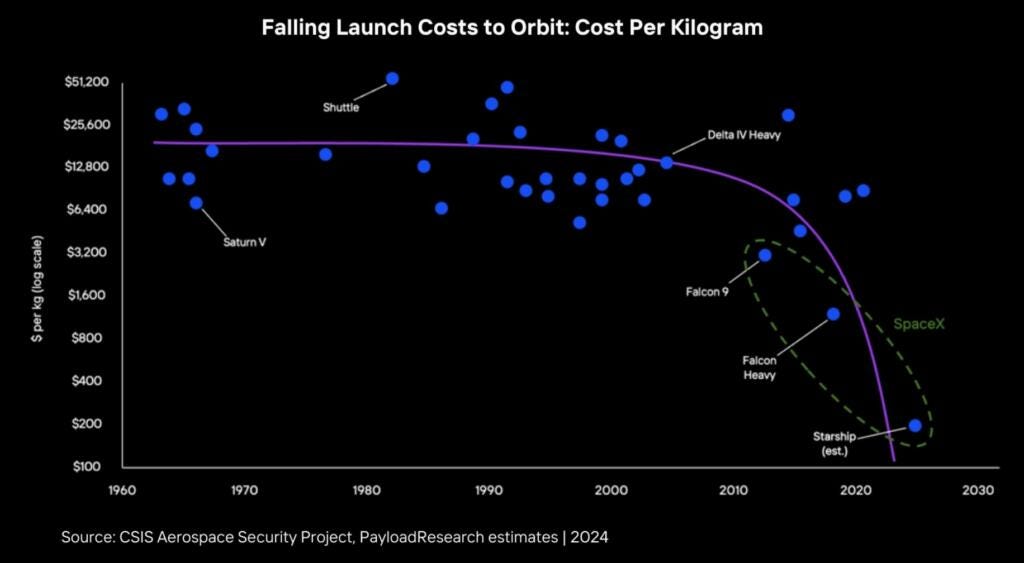
Bringing the cost down is a simple matter of mass production and reusability. Economies of scale bring the cost of manufacturing a Starship down; reusing the booster stage amortizes that cost over multiple launches, thereby reducing the per-launch cost. With production scaled up to thousands of Starships a year, each of which is launching a hundred times a year, the cost to orbit drops dramatically.
Obviously, launch cost isn’t the whole cost. Getting to Mars requires months in a small steel can, with all the food, water, oxygen, and CO2 scrubbing that comes along with it; surviving on Mars requires quite a bit of specialized equipment. SpaceX’s goal is for one-way transport to Mars to come down to something on the order of a few hundred thousand dollars – the cost to orbit will be a negligible part of the price tag.
A few hundred thousand for a ticket to Mars sounds absolutely crazy right now, but in the medium to long term it really isn’t. Of course, in the short term, travel to Mars will cost on the order of tens of millions of dollars. The only people going will be highly trained engineers, geologists, agronomists, doctors, and astronauts – who will be paid to go – with a small handful of the very rich as the only paying customers. However, with economies of scale in the mass-production of Starships, iterative improvements in technology, and a growing ability to build out infrastructure using in situ resource utilization (e.g., by 3D printing habitats from Martian regolith, bioremediating the perchlorates out of Martian regolith to turn it into topsoil and grow food, mining minerals to produce simple machine tools and electronics, etc.), the cost to get to Mars could be brought down dramatically. We could find ourselves in a situation, a few decades hence, and possibly even sooner, in which a berth aboard a Starship and a place in the Martian colonies can be had for a price comparable to a mortgage on a nice suburban split level – say, something on the order of a million dollars, or 0.1 Bitcoin, whichever is worth more by then.
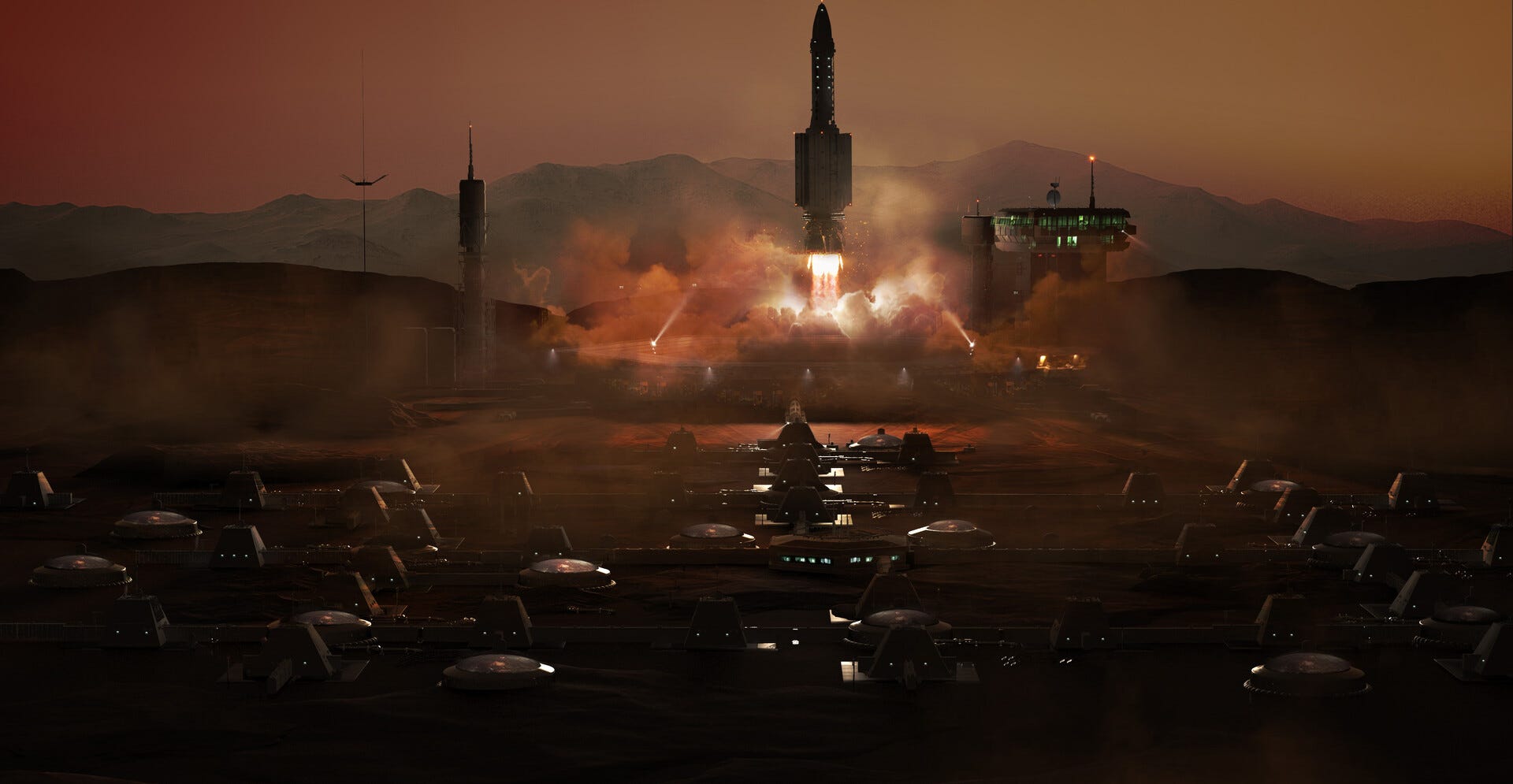
At that point, people can start financing Martian settlement themselves, for their own reasons, raising the money privately, from their own savings if need be. They won’t need to wait for permission from governments. They won’t need to convince Congress to fund a trillion-dollar Mars mission. They’ll just raise the money however they can, whether by selling everything they own or taking out a loan to be paid back with their own labour, and go.
And they’ll go, overwhelmingly, because they’re trying to escape.
Oh, they’ll go for the adventure, the glory, the thrill, the sheer wonder and challenge of it.
But they’ll also be seeking refuge from the cloying reach of the pointless people whose only purpose in life is to fetter their spirits in a world that has become too small, a global village crowded into a digital longhouse. They’ll be running to a place where they can finally move freely, unencumbered by the crushing burden imposed by the social gravity well of Earth’s choking mass of dysgenic biosludge.
They’ll be going to a place where there is no room whatsoever for useless people, where the margins are so thin and the technical challenges of survival so outstanding that industrial technology finally has a task equal to its capabilities, and the endemic parasitism of terrestrial society is ruled out a priori as an extravagant luxury.
They’ll be going so they can make Galt’s Gulch in the Valles Marineris.
But what kind of society will Martians actually build, in the long run? Will it be a libertarian research campus, or something ... very different?
took up the question of how Martian society might develop in What If Elon Musk Actually Goes To Mars? He suggests that the comfortable liberalism of the late West is likely to die a messy death in the red planet’s harsh conditions. Can women be allowed to exercise their right to choose, when making babies is a high priority? Can workers be allowed to strike for better wages or conditions, when they’re responsible for critical life support equipment? Can democracy be countenanced, when the people might vote out of short-sighted greed or blind hysteria, with catastrophic results? He paints a vivid picture of a truly alien, illiberal society that comes to resemble a Dark Ages cloister far more than it does the shiny Bay Area technoliberal utopia of glossy SpaceX promo videos.Exactly what Martian society will look like is, of course, impossible to say. It will almost certainly consist of multiple societies, for one thing – Mars is a big planet, with a surface area comparable to the combined surface area of all of Earth’s continents. Just as the original New World developed wildly different local cultures, each influenced by founder effects, subsequent migration waves, the character of the local climate, landscape, and ecology, and simple historical contingency, the same will certainly be true of the New New World.
Sheer distance will certainly lead to the Martians developing a sense of separation and difference. In terms of travel time, Mars will be about three times further away from Earth than the Americas were from Europe during the era of the tall ships. This is likely to have a profound psychological impact, as we’ve gotten used to the other side of the world being accessible with a few hours on an airplane. We’ve also become accustomed to instantaneous two-way video communication with anyone anywhere on the planet. Even if we live in another country, we can talk with our families and friends back home whenever we want. Real-time communication with the Earth will be impossible on Mars. The distance between Earth and Mars varies between 3 and 22 light-minutes, meaning a lag for two-way communication of between 6 and 44 minutes. Correspondence will certainly be possible; conversation will not. This is much faster than the months that intercontinental mail often required during the age of sail, but people in that time were used to slow communications. The world did not move at the speed of light. The barrier erected by c may well have a significant psychological impact on Martians. You can probably forget about LDRs between Martians and Earthlings.
The distribution of settlements will certainly play a role in the character of Martian society. Musk is planning for fleets of thousands of Starships to start arriving every two years. People seem to envision the settlers all joining the same colonial city, which I hope gets a better name than Mars Base Alpha (personally, I’m cheering for Burroughs). The default assumption is that everyone will be packed under one big dome, or in a claustrophobic underground tunnel complex, or something. However, there’s no particular reason that all those Starships have to put their passengers down in the same place. Indeed, there’s every reason not to: different parts of the planet have different resources, and it will almost certainly make sense to start building satellite villages to harvest these, in order to build out the trade networks of the local economy. Each of these settlements is likely to develop its own local culture.
What’s the minimum viable social unit on Mars? Could it be as small as an absolute nuclear family, as it was in the American and Canadian West, where all you needed was a horse, some livestock, and a wagon loaded with supplies and tools? Obviously you need a lot more than that, but then, our technological stack is quite a bit deeper than it was in the 19th century. With power from modular nuclear reactors and solar panels, and 3D printers to construct shelters and equipment, it doesn’t seem impossible that small homesteads could feed themselves by harvesting aquaponic tilapia and potatoes planted in bioremediated regolith, while making most of the material goods they need from locally sourced feedstocks. Given the sheer amount of space on Mars, some settlers might well choose to strike out on their own in preference to living in one of the larger settlements, in keeping with the historical Anglo settlement pattern.

In an important way the Martian settlements will be like the Netherlands: a country that literally would not exist if the Dutch had not applied their ingenuity and resources to reclaim the land the country is built upon from the ocean. However, all the Dutch really had to do was drain the water. Everything else was provided by the Earth’s built-in ecological services. On Mars the settlers will be acutely conscious that every cubic foot of breathable air, litre of fresh water, and square foot of living soil exists only because of human action. They will have built their entire ecology themselves, from the ground up – architects not only of buildings, but of biomes. It’s likely that even the genomes of the crops they cultivate and, ultimately, the animals they herd will be products of their own ingenuity – for example, introducing traits from shrubs in the deep forest to optimize photosynthesis in low light, or genes from high-altitude organisms to encourage hardiness against cold and the thin atmosphere. They will not have the luxury of taking anything whatsoever for granted. They will take a deep pride in this. In many ways this will be the closest humanity has ever come to taking on the role of the gods ... the most faithful emulation of the Creator ever performed.

That the colonists will not be able to take their biosphere for granted will have profound effects on their relationship to it. On Earth humanity has been accustomed to treating the ecosystem as a standing resource, or as an obstacle. Forests are there to be harvested for timber, wetlands to be drained for farmland, farmland an ideal platform for sterile subdivisions. We have gotten much better about this over the centuries, setting aside large tracts of land as wilderness preserves, enforcing responsible forestry practices that do not devastate arboreal ecosystems with clearcutting, and so on; old habits, however, die hard. On Mars those habits will have no place whatsoever. The standing reserve of resources will be dead rock and ice; its purpose, to be converted into topsoil, water, air, and life. The relationship of Martians to their biosphere will be wholly different from our own. For us, the biosphere is a mother that we too often ignore; for Martians, it will be a treasured daughter, sacred beyond measure.

We can make some educated guesses regarding the downstream consequences of founder effects based on the kinds of people with the predisposition, desire, and drive to emigrate: namely, WHIMs. The individualistic, meritocratic streak of the WHIMs is likely to exert a strong formative influence. We can probably also count upon a strain of fanaticism amongst the settlers: the colonies will attract those who believe passionately in humanity’s destiny in the stars, as well as those who have other religious or para-religious reasons for seeking settlements of their own, where they can build societies according to their own principles, without external interference. The Mormons, for example, already have a strong interest in space colonization. It would not be at all surprising if the Church of Jesus Christ of Latter Day Saints chartered quite a few Starships to send relatively large numbers of settlers, financed via tithes and selected via some sort of internal competition.
Martian settlement will be one of the most ruthless selective filters that colonization has ever applied to the human genome. The people who will migrate will overwhelmingly be intelligent, capable, ambitious, and either financially well-off enough to afford passage or sufficiently compelling prospects for investment that they can convince others to loan them the money to pay their way. They will be the people who can afford to go, who have the drive and vision to want to go, and who have the intellect and capacity to survive in a pitiless, freezing, airless desert hundreds of millions of kilometres from civilization. It will be to the settlement of North America, which bled off the best of the best of Britain and Western Europe, like an atomic bomb is to a blasting cap. It will be like throwing the human genome into a centrifuge and spinning it so fast that it fractionates into a different subspecies.
Intellect is not the only factor that will be concentrated on Mars via self-selection. In terms of the Big Five personality traits, Martian settlement is also likely to favour high openness (for obvious reasons), low neuroticism (anxious cowards won’t even think of going), high conscientiousness (mistakes get you killed), high agreeableness (they need to get along with people in close quarters), and moderate extroversion (they need to be team players, but they also need to be able to give people space).
The pre-selective filter is only the first step. Once on Mars, they’ll be subjected to ruthless selection conditions. Extraterrestrial environments are unforgiving to a degree that is hard to exaggerate. One screw-up and you’re dead. You think cold winters had a strong selection effect on Eurasian intelligence? Just as the difficulty, deprivations, and dangers promised by Mars will dissuade all but the smartest and strongest from going in the first place, so will the harsh climate exert a powerful eugenic effect. A gene pool already filtered for the finest will be distilled even further. If the barriers to participation in Martian settlement are a centrifuge that fractionates the genome, the harsh conditions of Mars will be a crucible that purifies that ore into an entirely new alloy.
A well-known pitfall of life on Mars is the low gravity. Under microgravity conditions human muscles atrophy, and our bones suffer from osteoporosis. Astronauts who spend too long in orbit often require an extended period of wheelchair-bound physiotherapy as they convalesce. This will not be so extreme on Mars, which does have gravity; still, that gravity is only a little over 1/3 of the Earth’s. Martians returning to the Earth after years on Mars may have difficulty moving. Imagine trying to walk with an extra 300 pounds piled on your back: that’s what weighing 200 pounds will feel like when your muscles and bones are used to 76 pounds. Some ubermensch, huh?
However, there is probably a very simple, low-tech way for Martian settlers to avoid degenerating into spindly weaklings: weight-lifting. A daily regimen of (what would on Earth weigh) 300-pound overhead presses, 500-pound bench presses, 800-pound squats, and 900-pound deadlifts would place a similar load on the muscoskeletal system as that endured by a moderately advanced powerlifter back on Earth. Weighted endurance cardio and high impact interval training would probably also be a good idea. The equipment doesn’t even need to be transported to Mars: it can be manufactured on the spot. NASA has already started experimenting with an Advanced Resistive Exercise Device aboard the International Space Station, which uses pistons, cables, and flywheels to mimic the effect of weightlifting in microgravity. It isn’t a perfect solution, but it makes a significant difference. Given its effectiveness in Martian gravity, it’s entirely possible that resistance training will counteract the biological effects of low Martian gravity entirely. If so, we can expect our Mars colonists to be gym rats, with the result that in addition to being smarter, more daring, and more enterprising than the average Earthling, the typical Martian will also cultivate the body of a Greek god, not out of vanity, but for reasons of pure practical necessity.
Combine all of these factors, and what do you get? A concentration of people who are highly intelligent, open to new ideas, capable of handling high-stress situations, and hard-working, with a heavy overlay of the WHIM tendency to be indifferent to physical risk, to prize excellence over equality, and to value self-reliant competence and personal initiative over subjection to communitarian mediocrity.
It’s a society of fiercely individualistic, ruthlessly meritocratic, stupendously creative, supremely competent, militantly religious gym bros, acutely conscious of themselves as the biological apex of the human species and the intellectual and spiritual vanguard of human civilization.
This combination, especially in the context of an extremely novel and challenging environment, is almost guaranteed to foster an exceptionally creative society that effortlessly generates new philosophies, scientific and technical advances, and artistic movements ... which will probably rebound on Mater Terra, with politically and culturally destabilizing consequences.
Mars will be the Athens to Earth’s Persian Empire.
The society that swirls out from the Martian dust storms will leave the Earth in the dust.
At a certain point, the Martians are going to start thinking of themselves as being of a wholly different, and far superior stock to that which persists back on Earth. Perhaps even a distinct subspecies.
And they’ll be correct.
This, I think, is the real purpose of going to space. It isn’t about making money, or preserving consciousness. It’s a eugenic project: the necessary stimulus for humanity to reach the next level in its biological and social development.
I can’t help but think that those intent on slowing or outright preventing man’s migration into space are motivated, deep down, by some intuition of the likely sociobiological consequences. The horde of spiteful mutants gathered under the banner of social injustice have an overpowering urge to tear down everything mighty and great, to chain the strong, to sicken the healthy, to vandalize the beautiful. They are animated by ressentiment for the higher types of man that already exist. The mere possibility of even higher types being bred, let alone at a remove where they cannot possibly be controlled, must fill them with horror.
At the same time, the financial-managerial elite’s beloved globalist project of turning the Earth into an all-encompassing, inescapable, regimented panopticon relies upon achieving perfect global control of the human species. Global control requires keeping humanity confined to the globe, because space is impossible to control. How do you keep a leash on Martian colonies that can only be reached by a months-long journey every couple of years, when the launch window opens? Sure, you can try to keep them dependent upon trade connections with Earth for advanced electronics, but as local economies mature this will stop working. They’ll be sourcing the rare earths on the asteroids, and doping semiconductors in their own nuclear-powered chip fabs.
Mars is just the first step, Chapter 1 in the multiplanetary saga. The swarming archipelago of asteroids is an even greater problem for the would-be controllers of humanity. There are millions of minor planets within which little settlements could be constructed. And the asteroids, too, are just the beginning.
Centralized control structures are a non-starter in a multiplanetary society. The distances are too vast, communication is too slow. Space is like the Eurasian steppe: effectively endless, and absurdly easy to move around in, once you’re there. Top-down, authoritarian hierarchies aren’t just impractical, they’re impossible. Large enterprises with interests across the solar system will need to operate more like the Royal Navy and the East India Company in their heyday than the modern US Navy or multinational corporations, with local commanders being given wide initiative. The solar system’s political structure is likely to resemble the Holy Roman Empire much more than it does a modern polity with tightly concentrated state authority: an almost uncountable myriad of tiny, independent, self-governing principalities and republics spread across the planets, moons, and asteroids, bound together loosely if at all in federated structures based upon trade interests, cultural affinities, and bonds of personal loyalty to individual, inspirational leaders whose power is far more symbolic and exemplary than it is directly coercive.
In Morgoth’s future timeline, the Martian colony is prematurely severed from the Earth’s umbilical cord when the competence crisis finally collapses Earth’s complex systems. Nevertheless, the colony survives, and some time later their descendants – now a completely alien society, a sort of monarchical theocracy – return to the Earth, look down on it in disgust and contempt, and abandon it to its degenerate fate. That’s certainly one possibility.
It seems equally plausible, however, that the kind of society I sketched out above would react to such a crisis in a wholly different fashion. Having concentrated the best of humanity and then refined it into something clearly superior, having built a world from the dirt up, having shouldered the burden of growing life and consciousness throughout the cosmos that it might not only persist but thrive and develop indefinitely, and having at their fingertips the resources of an industrialized solar system ... would they really turn their back upon the Old World as bureaucratic sclerosis, shallow greed, and dysgenic decay dragged it down into the steaming compost pile of a Global Zimbabwe?
I don’t think they would turn their backs. I think that they would conclude that they had both the ability and the divine mandate to rule, and that they would assume that mantle.

After all, smashing the globalist’s planetary prison favela would be as easy as dropping a few strategically placed rocks.
Of course, this assumes that the Earth’s societies continue on their present decaying trajectory. Martian settlement may influence this.
On the one hand, if Mars bleeds off millions of Earth’s best, the brain drain could cripple the Earth; while even a million colonists would be around one hundredth of one percent of the Earth’s population, people out on the far tails of normal distributions tend to have, as it were, a disparate impact on society. This is particularly true if the settlers come disproportionately from North America’s white population, as seems probable. Martian settlement could accelerate the Old World’s competence crisis, depriving it not only intelligence, but its remaining vital spirit.
On the other hand, settlement of the New World did not have this effect on Europe. Quite the opposite: Europe was reinvigorated by the Renaissance and the Enlightenment. It’s possible that the opening of the high frontier would prevent the Earth’s societies from becoming closed systems choking on their own entropy; that the Martians would, purely by example, inspire those back on Earth, opening the human mind to the possibilities of the infinite cosmos; that the novelty their creative energy would introduce into the culture might grip the collective mind with a renewed sense of confidence and precipitate a new Renaissance.

Thank you for spending all that time reading this. As almost invariably happens, it ended up a lot longer than I expected. I have a hard time staying on-topic. Some people have a one-track mind; mine is more like a labyrinth that I’m continuously trying to escape from. I hope in this case I found the red thread.
Once again, I express my depthless gratitude to my generous patrons, who make it possible for me to do this, instead of holding down a real job. It amazes me every day that I’m able to support myself by writing for you; it amazes me even more that there are people who offer their support, receiving nothing in return but my thanks, and an essay on something that is hopefully of interest every week or three. If on the other hand your conscience is bothering you because you have so far enjoyed all of this for free, and you would like to buy me a beer to encourage me to continue writing, it’s very easy:
If you enjoyed this, and it’s your first time reading a Postcard from Barsoom, you might find something else interesting below. I don’t always write about space; my mental maze has all sorts of strange little corners.
If you liked the science-fictional slant of this essay, you may also enjoy my fiction. Others have:
“This is the best fiction I've read on Substack. Props.” “Holy crap dude. This is fantastic.” “That packed a wallop!” “I see some greatness in this writing, and I see this expanding beyond earth. Good, male oriented fiction is hard to come by.” “I am unsatisfied only because it ended so quickly.” “I'm ready for the movie.”
Though I am sad to inform you that while all of my thoughts are free, my dreams and nightmares are behind the curtain in the VIP section.
Who failed out of his first PhD program and has one of the world’s least impressive publication lists, but let that slide.
Although everyone conveniently forgets that this hypothesis was considered pseudoscientific clapdaddle up until a few decades ago
And I think it is, though of course, academics treat it as pseudoscientific clapdaddle, just as they did Chicxulub
Which shouldn’t exist, according to the conventional narrative of prehistory, which hasn’t prevented academics from clinging to their conventional narrative, considering any notion of an Ice Age civilization to be pseudoscientifc clapdoodle.
We get hit by extragalactic GRBs all the time, but at those distances they aren’t even bright enough to see with the naked eye.
Full disclosure, I got that from ChatGPT.
Here’s the original paper, Culture and Identity-Protective Cognition: Explaining the White Male Effect in Risk Perception (Kahan et al., 2007); as far as I can tell, the acronym WHIM was coined by Jeremy Kauffman on Twitter. But it’s catchy so I’m going with it. The figures appear to be from a defunct squarespace page no longer maintained by Kahan. Internet bitrot strikes again.
















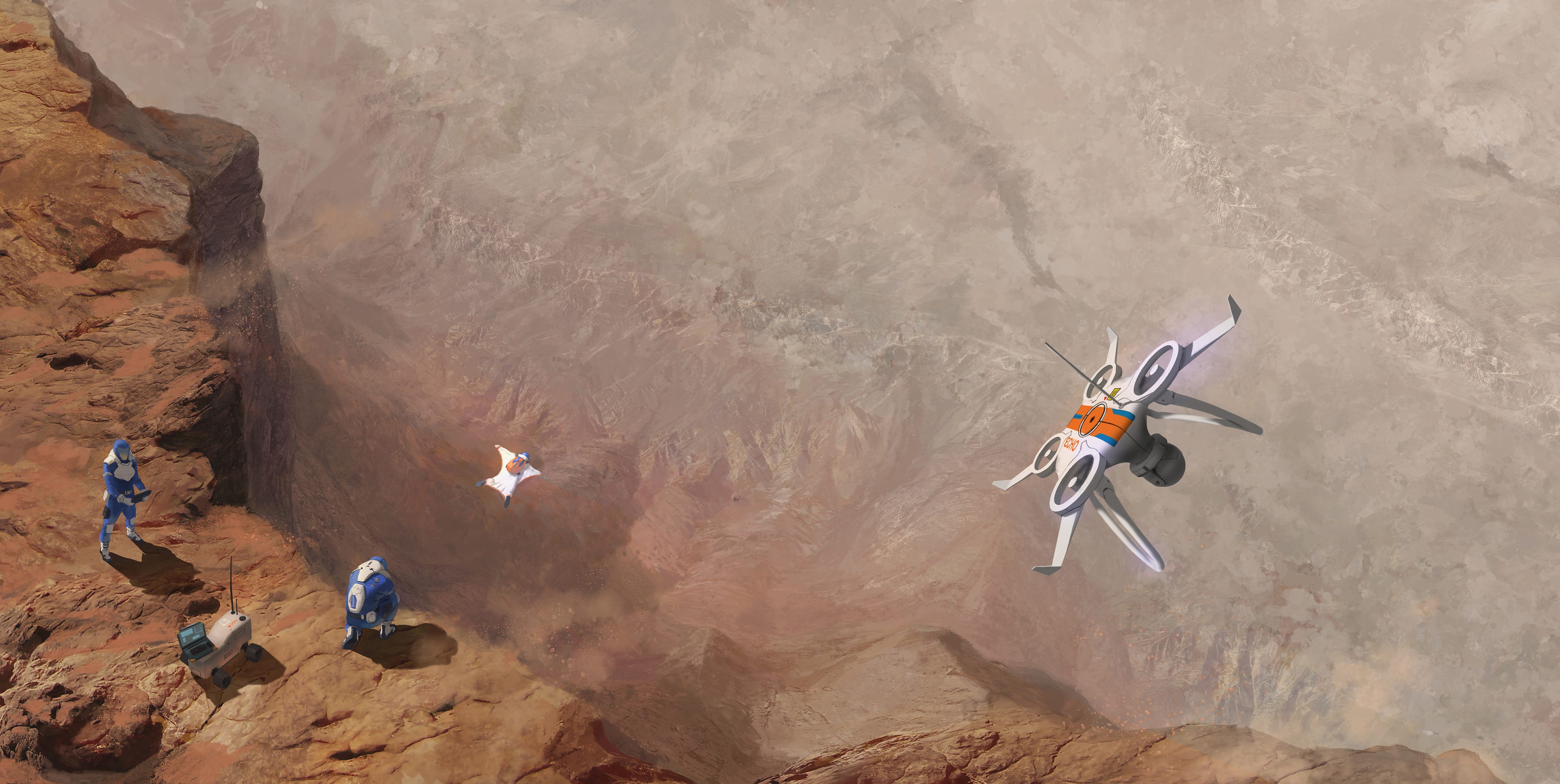



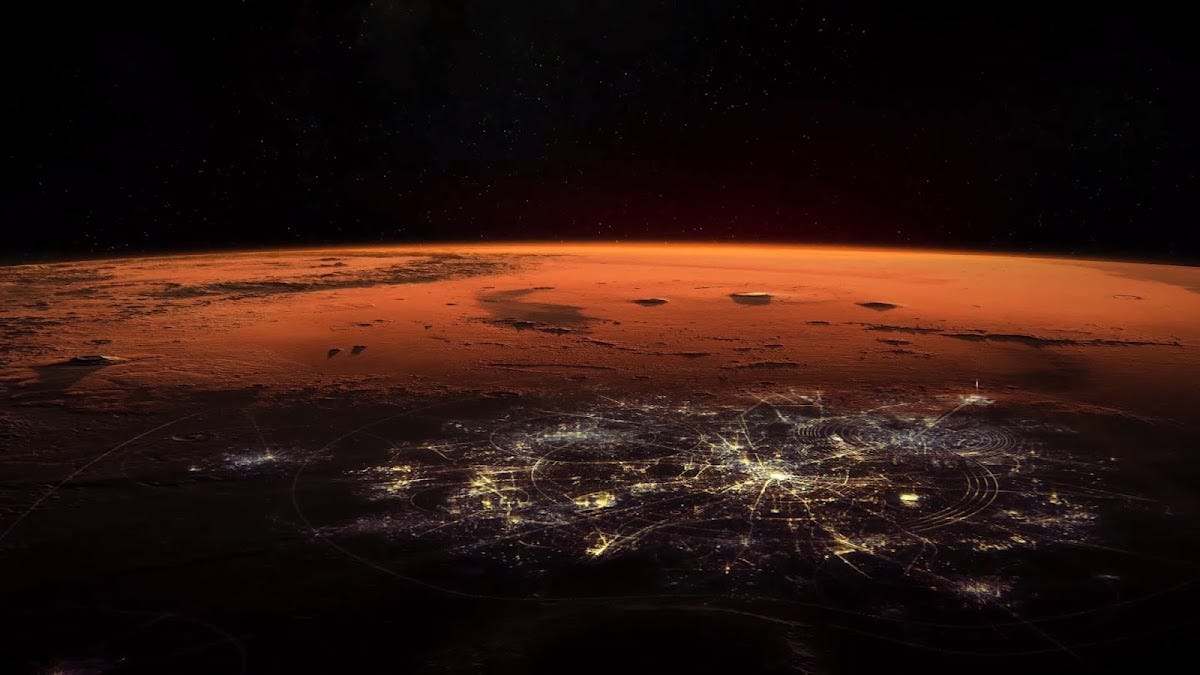
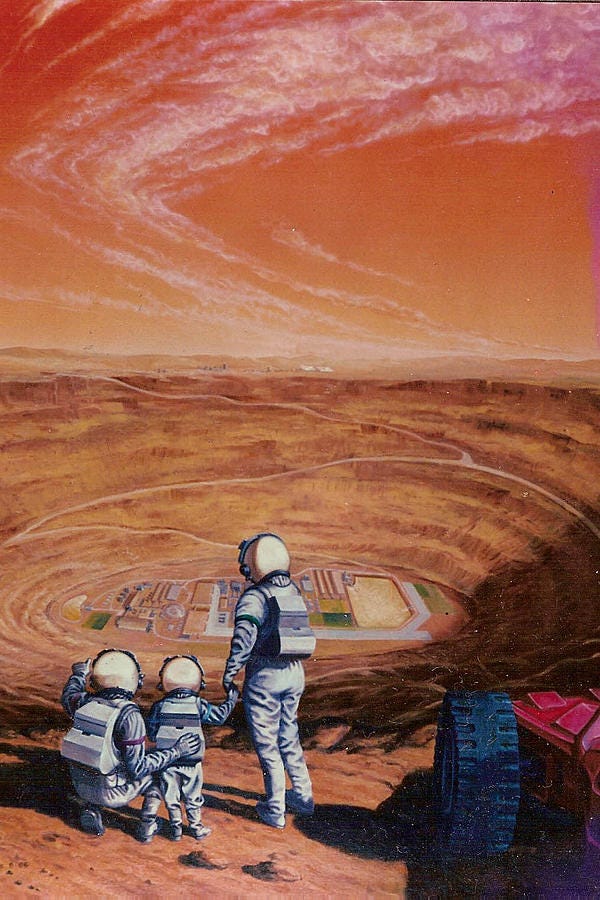







Earth Lives Matter releases a statement decrying the Martian requirements to become a settler. They say that the absence of lower iq people is evidence of discrimination, racism and misogyny. Riots break out in major cities across the world, despite martial law being in effect, with rioters demanding the decolonization of Martian colonization. Spray painted messages stating the historical wrongs of the demographic makeups of the first settlers must be undone with new quotas of subsidized settlement groups.
On Mars, as the news of this reached, a few old settlers made their way out of the spacepub, drew a raised fist in the red earth, and pissed on it. They looked at one another, clapping hands on backs, and sternly saying "Never" as they went in for a final round before returning to their homesteads.
I would rather die in a failed Mars colony than ride out Imperial decline back here on yeast-Earth.
We must become our own Antarctic Space Nazis, or die trying.
Also, the first colony must be Carter City.